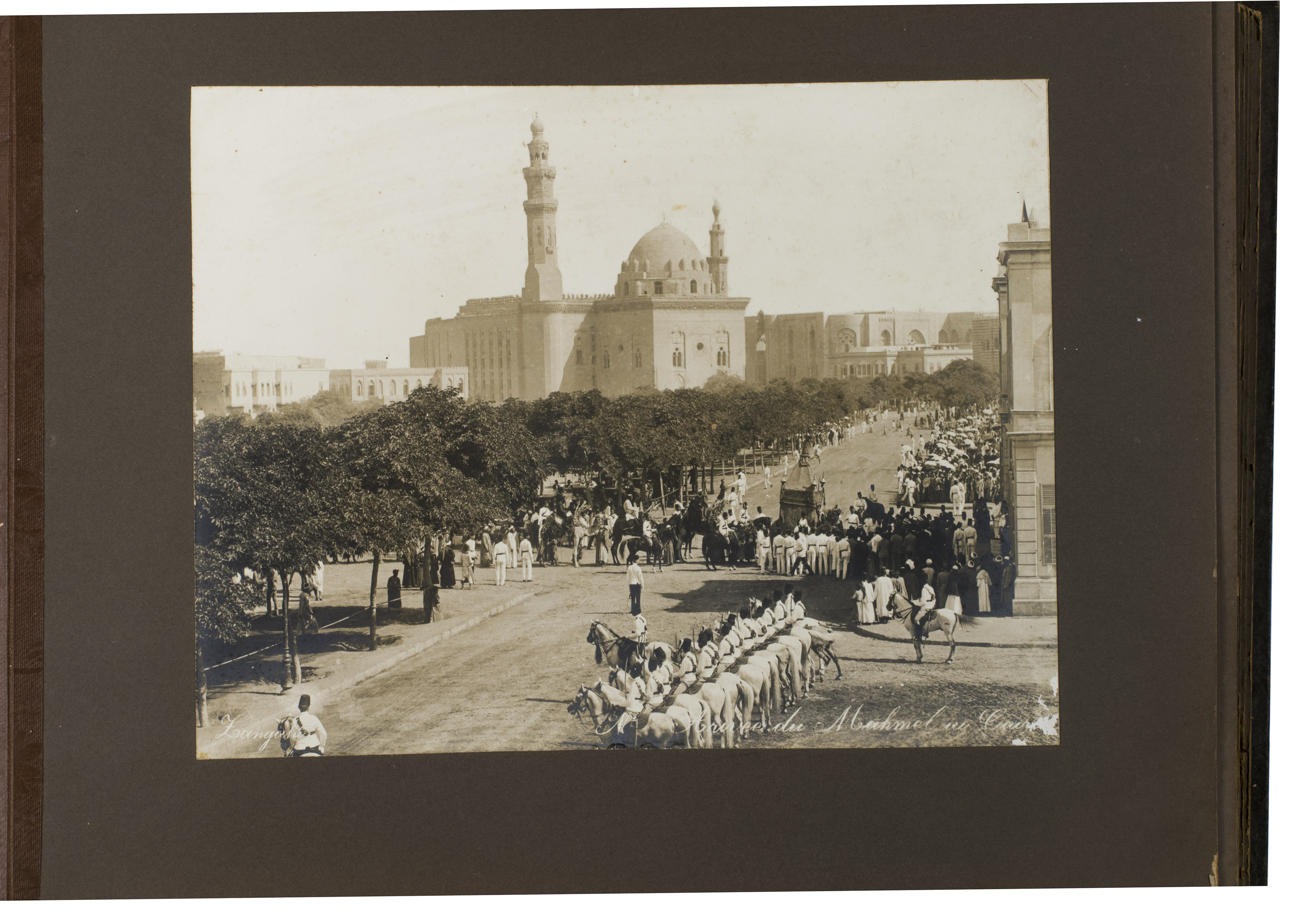ZANGAKI BROTHERS and others (photographers).
[Cover title:] Egypte.
[Egypt, ca. 1870-1913]. Oblong folio (ca. 33 x 41 cm). With 83 albumen prints, of which 2 folding panorama photographs, 17 signed and numbered in the negative by the Zangaki brothers, and 66 larger prints of the oil industry. Contemporary embossed brown cloth (made to imitate reptile skin), with the title blind-tooled on the front board, decorative paper endpapers. [42], [8 blank] ll.
€ 6,500
Remarkable collecton of photographs about Egypt, and in particular about the Egyptian oil industry. The first 17 photographs in the album date from the 1870s and 1880s, and were made by the famous Zangaki brothers, who were among the first commercial photograhers working in Egypt. The beautiful prints in the album show views of Caïro, pyramids, and locals, which are the type of scenes the Zangaki's specialised in. The remaining photographs date from the 1910s and offer a unique view of the very beginnings of the Egyptian oil industry. They document the building of an oil refinery and storage, presumably near Ras Gemsah, where Egypt first began drilling for oil. An especially notable addition to the collection are the two folding panorama photographs, which give a good sense of the scale of these building projects. As we have not been able to find these photographs anywhere else, they may have been privately commisioned by the Egyptian oil industry and only given to those involved in it.
The Anglo-Egyptian Oilfields Limited registered in London on 6 July 1911. The company was a joint operation of Royal Dutch Shell and British Petroleum with the objective of receiving concessions, developing, drilling, purifying, supplying, reserving, distributing and handling petroleum products.
Ras Gemsah became a very important source of oil, and in 1911, the first oil refinery was established there, which is what the present photographs show. The refinerys first operations commenced in 1912 and it was considered the only origin for oil production for quite some time. On one of the photographs, the English, Egyptian and Dutch flags can be seen side by side. Since the album was bound by R. W. Rinck of the Hof- en Nederlandsche albumfabriek en hofboekbinderij, which was a prestigious bindery at the time, it may have been meant for an important Shell employee involved in the Ras Gemsah project.
With the label of the bookbinder (R.W. Rinck, Den Haag) at the foot of the front pastedown. The corners and edges of the boards are somewhat scuffed. The edges of the leaves are discoloured, without affecting the photographs. Otherwise in good condition.
Related Subjects:

















